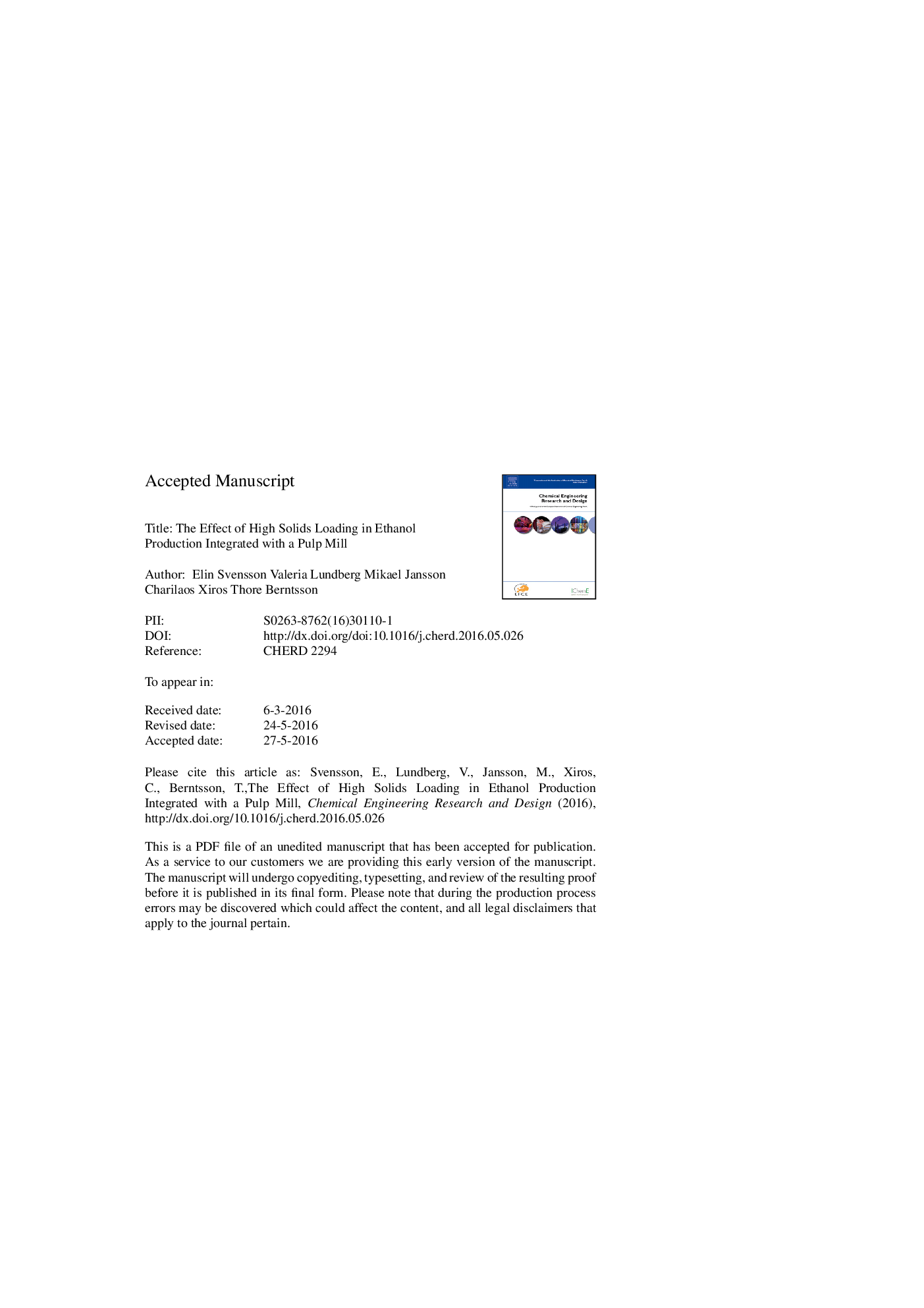| Article ID | Journal | Published Year | Pages | File Type |
|---|---|---|---|---|
| 7006454 | Chemical Engineering Research and Design | 2016 | 29 Pages |
Abstract
In this paper, two ethanol processes integrated with a softwood pulp mill are compared with regard to their steam demand, process integration potential and profitability. The processes differ in the solids loading in the simultaneous saccharification and fermentation step and in the resulting ethanol concentration. The results show that a higher ethanol concentration does not necessarily lead to significant reductions in steam demand. Instead, it is demonstrated that the steam demand for distillation is highly dependent on the design of the distillation plant. Nevertheless, a higher solids loading (high gravity) can be beneficial for the treatment of the stillage from the distillation plant. A higher solids loading results either in a lower steam demand for evaporation of the stillage or possibly in a reduced demand for effluent treatment compared to a conventional solids loading process. While the results show that a higher ethanol concentration leads to advantages in energy costs and investment costs for the distillation plant, they also show that the potential benefits of a high-gravity process are offset by the expected decrease in ethanol yield, which leads to higher raw material costs.
Related Topics
Physical Sciences and Engineering
Chemical Engineering
Filtration and Separation
Authors
Elin Svensson, Valeria Lundberg, Mikael Jansson, Charilaos Xiros, Thore Berntsson,
